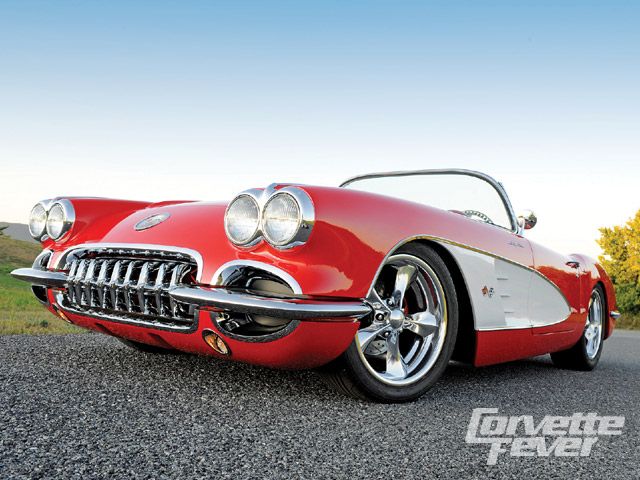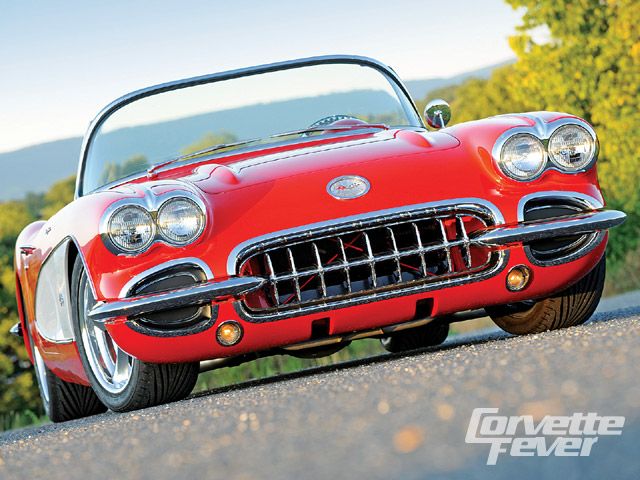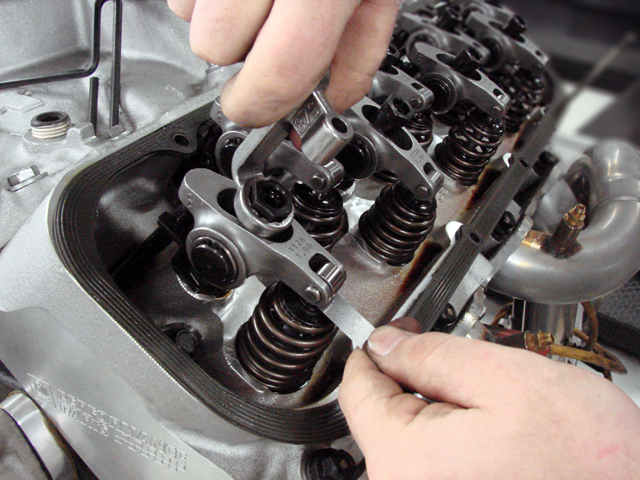Herb Turner's 1960 Vette Rod
From Project To Vette-Rod-With Patience!
From the February, 2009 issue of Corvette Fever
By Scott Ross
Photography by Jerry Heasley
Link to Origional Article
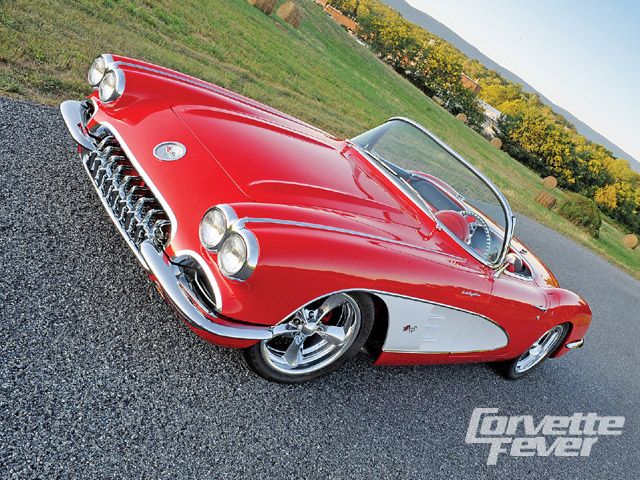
Herb Turner's '60 needed remedial bodywork-including removing an "extra" front valance-before it became the looker you see here.Corvette is another word for adventure. That can describe where they've been and who's owned them before, or where you're going with them, and what you have to go through to get them to look as good as Herb Turner's '60.
Herb found this well-used C1 on eBay about four years ago. His father, a former Olds and Cadillac dealer service director who'd helped Herb in his Vette-buying, was afraid his son was in over his head. "My dad threw a fit for about a week because he thought he'd committed me to something bad, that I didn't really know how bad the car looked," Herb says. "I must have talked to him four or five times within the span of seven days at that time. I kept telling him, 'Dad, I know, it's OK.'"
Color on the Curves PPG's C5 Corvette Torch Red (with Ford Competition White in the coves) graces the refinished fiberglass body on Herb's C1.But there were secrets hidden inside that vintage fiberglass-and not good ones. "When I started on this, I didn't understand the value of a 'no-hit' body," says Herb. "I understand now that it's worth about $10,000."
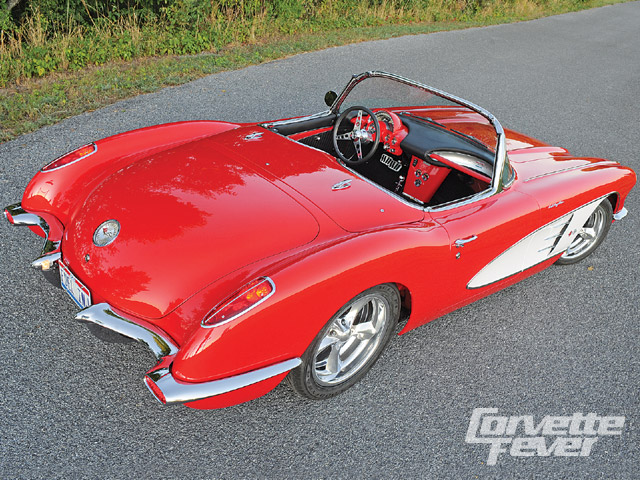
The body problems started in front, which Herb says was a disaster. "When I got the car, I couldn't figure out why the hood rubbed the front edge of the hood surround. After we got the body media-blasted, we saw that someone had taken the front valance-where the Corvette emblem is-and glued another one on top of the old one. The thickness of it was all wrong, and that's why it was rubbing." So, off came the valances and the hood surround, replaced by reproduction pieces.
That wasn't all that was wrong up front, however. Herb says that Harry Phillips at Amherst Classic Car in Amherst, Ohio-where Herb took it for bodywork-called to say that the hood was too small. "What happened was the stock hood had been trimmed by 1/2 inch to fit this new opening conjured up when they put the new front valance on top of the old one," he says. "Harry had to build the original hood back out to its original size."
The right-rear corner of the body had its own story to tell, and Herb says that one wasn't a good one, either. "The thing had been smacked, or 'nudged' there, and when they fixed it, they didn't fix it right." Herb also says he has a photo showing the new "repair," done by pulling on the quarter-panel and placing a 1/2-inch-thick piece of plywood between the body and body rotisserie, pushing the quarter outward into position. (KIDS: Do not attempt this kind of Vette body repair at home, or anyplace else!)
Fortunately, the rest of the '60 was in good shape. The original frame was retained after its original chassis and suspension hardware was replaced by Jim Meyer's suspension kits at each end. Herb said his first choice was to go with the Jim Meyer coilover setup in front only, once he removed the 350 that came with the car (a successor to the original 283). As he puts it, "I got the body off, I'm looking at the frame, and I had the front suspension off to put the Jim Meyer stuff on it, and I said, 'I know I'm going to put a 383 stroker in here.' So, I went out and bought a set of Traction Master traction bars and put them on the stock suspension. I looked at them, and thought, This is crap. I'm going to do all this work, so, I called Jim Meyer's and ordered the rear kit."
Even though it had been years since Herb had done any hands-on project work, he tack-welded the new rear suspension pieces in place so he could check the clearances around the body, drivetrain, and rearend. "I was worried about clearance in the tunnel for the driveshaft," he says. "I had to cut some of the fiberglass in the front suspension area for clearance for the new pieces. When I did that, I got dust all over the place. It turns out that was the best thing I ever did, because enough of that white fiberglass dust settled on top of the driveshaft to give the perfect contrast all the way down to the U-joint by the transmission. I could see everything when I stuck my digital camera on top of the driveshaft, and I took pictures of it."
